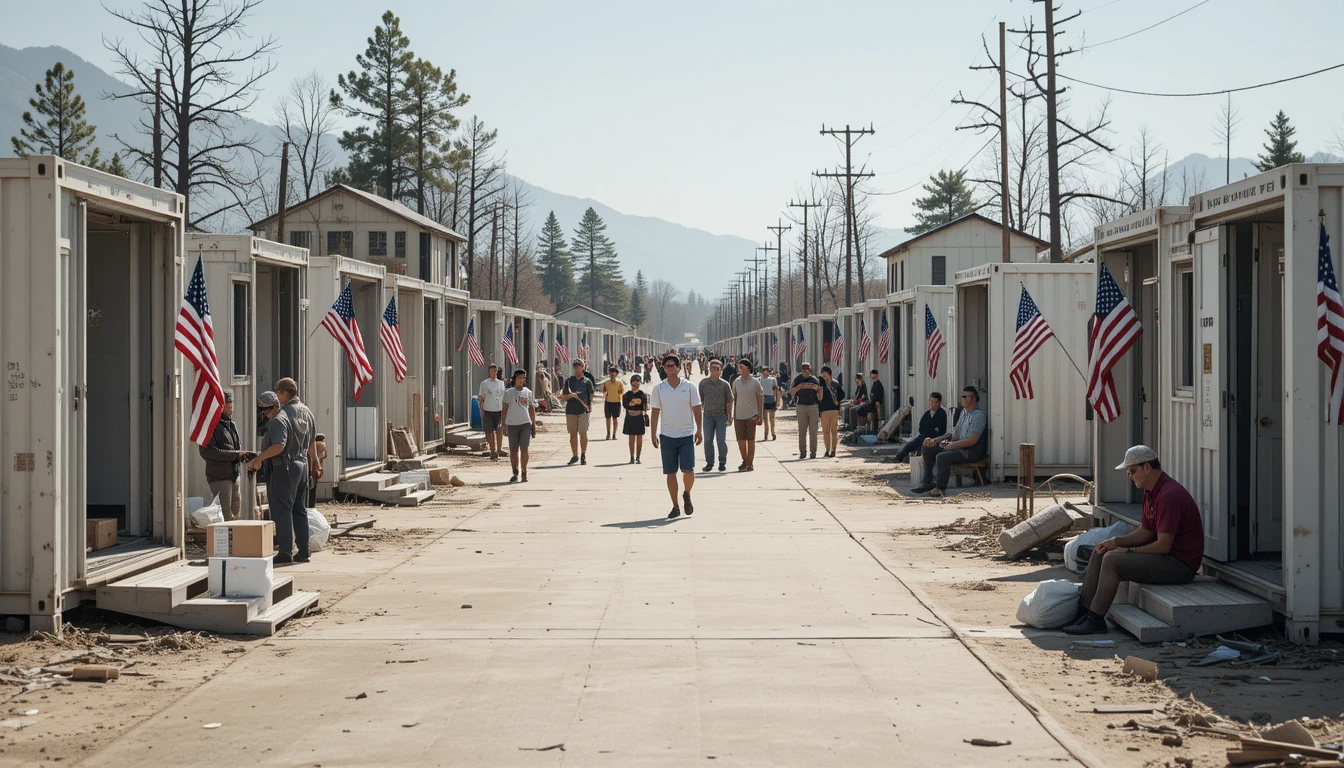Phone:
(701)814-6992
Physical address:
6296 Donnelly Plaza
Ratkeville, Bahamas.

When disaster strikes-whether a hurricane, wildfire, flood, tornado, or earthquake-the aftermath often leaves more than physical destruction in its wake. Thousands of people can find themselves homeless overnight, forced to leave everything behind in search of safety and stability. In such critical moments, disaster relief housing becomes a lifeline-a temporary yet essential solution that bridges the gap between crisis and recovery.
In the United States, the growing frequency and severity of natural disasters have underscored the urgent need for resilient, flexible, and humane shelter solutions. This is where disaster relief housing plays a pivotal role, offering affected individuals and families a safe place to live while they begin to rebuild their lives.
🍓 Click Here to Buy Tiny homes 🥃✨
🛒🍓 Grab Your Tiny homes Now! 🥂💎
🍹🍓 Enjoy the Sweetness – Buy Tiny homes Today! 🛍🔥
Disaster relief housing refers to temporary shelters or homes provided to people who have been displaced due to a natural or man-made disaster. These homes are intended to serve as short- to medium-term accommodations until residents can return to their permanent homes or transition to long-term housing.
Depending on the scale and location of the disaster, relief housing can come in various forms:
These housing types are deployed by government agencies, NGOs, and international humanitarian organizations to meet urgent shelter needs in the aftermath of disaster events.
The U.S. faces increasing threats from climate-related disasters. According to NOAA, 2023 saw a record number of billion-dollar weather disasters in the country-including hurricanes, wildfires, and severe storms. These events can displace tens of thousands of people in a matter of hours.
As climate change accelerates the frequency and intensity of disasters, local, state, and federal agencies are working to improve emergency preparedness and housing response. Disaster relief housing is no longer a short-term solution-it’s part of a broader resilience strategy aimed at minimizing human suffering and economic loss.
Disaster relief housing must meet several key criteria to serve affected populations effectively:
Speed is critical after a disaster. Temporary homes must be delivered and set up quickly, often within days of the event, to prevent additional hardship.
Relief housing must protect against the elements and provide a secure living environment. Whether it’s a modular unit or a reinforced shelter, durability is essential in ensuring occupants’ well-being.
While temporary, these homes should provide access to clean water, sanitation, electricity, and climate control. In colder regions, adequate insulation and heating are vital.
Communities need solutions that can be rapidly scaled to house large populations. Modular homes, container units, and mobile trailers can be deployed in clusters to form temporary communities.
Temporary does not mean inhumane. Residents should have privacy, space, and access to social services and infrastructure (schools, clinics, community centers). Good disaster housing preserves dignity and encourages recovery.
FEMA has long relied on trailers as temporary housing following disasters like Hurricane Katrina and Hurricane Harvey. These units are transportable, contain basic amenities, and can be occupied for extended periods.
These structures are built off-site and assembled rapidly on location. They often come with better insulation, plumbing, and electrical systems, offering more comfort than basic trailers.
Recycled shipping containers have become a sustainable solution for disaster relief. They are durable, secure, and can be customized for different climates and needs.
Used during the earliest stages of disaster response, tents provide immediate cover but lack long-term livability. These are often replaced with more durable housing as the response progresses.
In the U.S., several organizations coordinate disaster housing efforts:
Despite its importance, disaster relief housing faces several challenges:
Overcoming these challenges requires better planning, public awareness, and investment in disaster resilience infrastructure.
To make disaster relief housing more effective and humane, the U.S. can:
As disasters become more frequent, improving post-crisis housing isn’t just about recovery-it’s about readiness, resilience, and equity.
While these homes are intended for short-term use (weeks to months), many people remain in disaster housing for a year or more, depending on how quickly permanent housing can be rebuilt or accessed. FEMA allows occupancy for up to 18 months in most cases, with potential extensions.
Eligibility is typically determined by FEMA or local authorities based on factors such as loss of residence, income level, insurance coverage, and the severity of the disaster’s impact. Affected individuals must register with FEMA to apply for temporary housing assistance.
Modern units are designed for safety and livability. While they may not offer all the comforts of a permanent home, most include heat, air conditioning, plumbing, and locking doors. Advanced prefab and container homes offer even more amenities and energy efficiency.
Yes. Many states and counties are now pre-purchasing modular housing units or partnering with manufacturers to ensure quick deployment. Community disaster planning also involves identifying potential shelter sites and setting up logistics in advance.
Disaster relief housing plays a critical role in disaster response and recovery in the United States. It’s more than just a roof-it’s a symbol of safety, recovery, and hope. Whether it’s FEMA trailers, container homes, or modular units, providing effective post-crisis housing is essential to restoring lives and rebuilding communities.
As disasters become more intense and frequent, investing in smarter, faster, and more compassionate disaster housing solutions will be vital to America’s resilience. For policy leaders, emergency planners, and everyday citizens, understanding and supporting these efforts can make all the difference when the unthinkable happens.